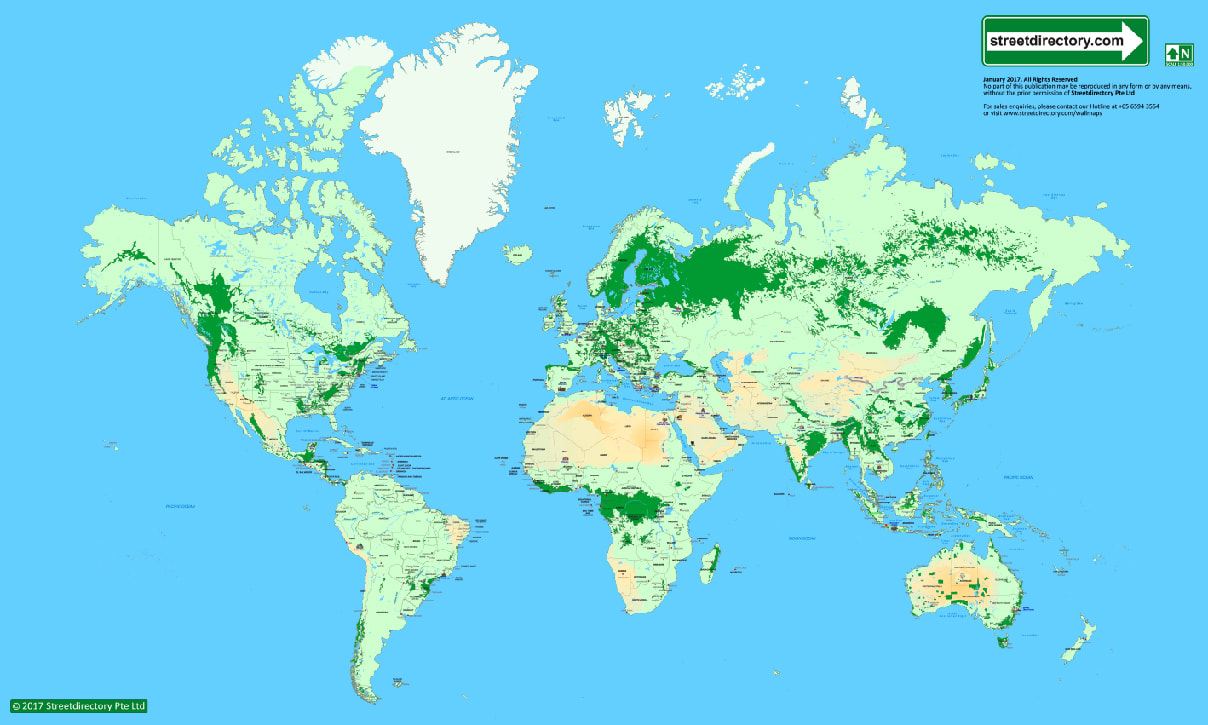

state Greenland appears larger than Africa, when Africa is actually 14 times greater in size and Africa also appears to be about the same size as Europe when it is almost three times larger.Ī mosaic of world countries retaining their correct size and shape. The visualization clearly reveals how landmasses near the poles in the Mercator projection appear much larger than they actually are, relative to those nearer the equator.įor example: Antarctica appears as the biggest continent, despite it being the fifth largest in area Alaska takes up as much area on the map as Brazil when, in reality, the South American nation's area is almost five times that of the U.S. This demonstrates you can't fit shapes on a sphere back together again once you put them on the flat."
ACTUAL MAP OF THE WORLD MANUAL
"There was then some manual tweaking of countries that are closer to the poles. "Each country is projected to the spherical projection and placed at the center of where it appears in the Natural Earth projection," Kaye wrote in a Reddit post in reference to his creation. Met Office, has created a visualization of the Mercator projection in which countries morph into their true size. In order to more accurately depict the size of the countries, Neil Kaye, a climate scientist from the U.K. #dataviz #maps #GIS #projectionmapping #mapping /clpCiluS1z- Neil Kaye October 12, 2018 Choropleth maps use color hue and intensity to contrast differences between regions, such as demographic or economic statistics.Animating the Mercator projection to the true size of each country in relation to all the others.įocusing on a single country helps to see effect best.

Geological maps show not only the surface, but characteristics of the underlying rock, fault lines, and subsurface structures. Physical maps show geographical features such as mountains, soil type, or land use. Political maps emphasize territorial boundaries and human settlement. Maps of the world generally focus either on political features or on physical features. With exploration that began during the European Renaissance, knowledge of the Earth's surface accumulated rapidly, such that most of the world's coastlines had been mapped, at least roughly, by the mid-1700s and the continental interiors by the twentieth century. From prehistory through the Middle ages, creating an accurate world map would have been impossible because less than half of Earth's coastlines and only a small fraction of its continental interiors were known to any culture. Ĭharting a world map requires global knowledge of the earth, its oceans, and its continents. Many techniques have been developed to present world maps that address diverse technical and aesthetic goals. While this is true of any map, these distortions reach extremes in a world map. Maps rendered in two dimensions by necessity distort the display of the three-dimensional surface of the earth. World maps, because of their scale, must deal with the problem of projection. The most detailed, true-color map of the entire Earth to dateĪ world map is a map of most or all of the surface of Earth.


 0 kommentar(er)
0 kommentar(er)
